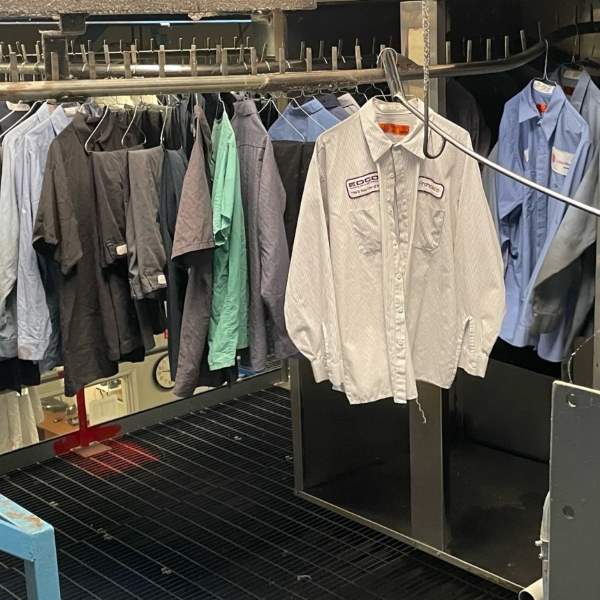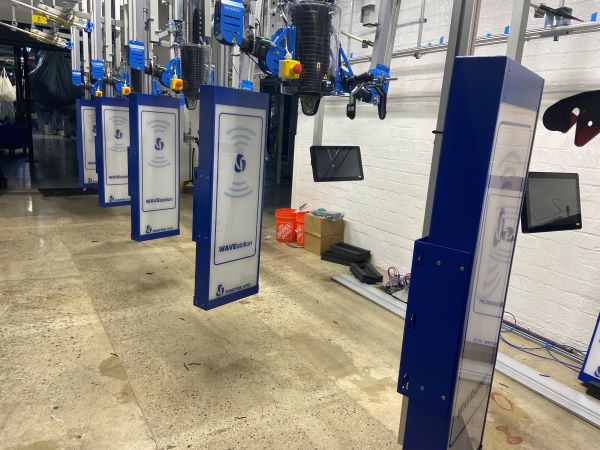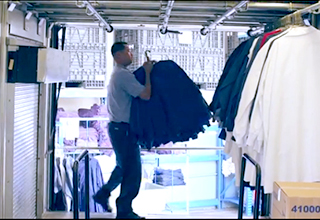A message from our CEO
“Prudential’s technological innovation will continue to set us apart from our competition. RFID is the most modern method of uniform tracking, giving our customers far superior insight into the location of uniforms and history of use.“
CEO, Prudential Overall Supply

A message from our CEO
“Prudential’s technological innovation will continue to set us apart from our competition. RFID is the most modern method of uniform tracking, giving our customers far superior insight into the location of uniforms and history of use.“
CEO, Prudential Overall Supply

Benefits of RFID
Did You Know?
RFID tags are completely harmless. They use similar technology as a credit card or an employee ID badge.
ISO Compliant
With ISO Compliant multi-read, Ultra High Frequency (UHF-866-928MHZ) technology, it is possible to read an entire bundle at once
What is RFID?
Radio-Frequency Identification
Radio-frequency identification uses electromagnetic fields to automatically identify and track tags attached to objects. The RFID system consists of a tiny passive radio transponder that lies dormant until activated by a reader.

RFID Applications:
Although RFID technology has been in use since the 1940’s, the demand for RFID equipment is increasing rapidly, in part due mandates by the US Department of Defense and large chain stores requiring their suppliers to enable products to be traceable by RFID. RFID is a Passive System.
Where RFID is used in daily life:
- Apple pay
- Hotel room access
- Free-way toll booths
- Security tag system at department store
RFID Technology is used in many industries:
- Inventory management– Asset tracking
- Controlling access to restricted areas
- ID Badging
- Supply chain management
- Counterfeit prevention (e.g. in the pharmaceutical industry)
RFID Garment Tracking System*
-

1. Pick Up
Your Customer Sales Representative carries a device to facilitate any service adjustment requests. The invoice is completed on the device allowing your CSR to make requested adjustments on-site. An authorized signature is then captured.
-

2. Garments Arrive At Facility
Soiled garments are pushed into facility by your Customer Sales Representative with RFID tags.
-

3. Place Into Scan Machine
The cart is pushed into the bulk RFID scan machine to record quantity picked up.
-

4. Soil Sort
Garments are sorted by the type of fabric, type of soil and if special processing needs are necessary.
-

5. Washing
We process by soil classification with computerized water wash equipment.
-

6. Drying
The drying process is conducted by utilizing energy efficient equipment calibrated to gain maximum garment life.
-

7. Finished Shirts
Professionally finished.
-

8. Finished Pants
Professionally finished.
-

9. In Line Repair
The garment repair stations are located within the process flow. The eye opener repair tag allows your employee to point out specific repair needs. Repaired garments are delivered on the next scheduled delivery.
-

10. Individual Garment RFID
Newly established accounts will have the ability to be RFID scanned. Existing accounts will be RFID scanned as RFID tags are added to customer accounts.
-

11. Scanning RFID Tag
Final RFID scan confirms that 100% of customer’s garments are ready to be returned to customer’s facility.
-

12. Distribution / Quality Assurance
Prudential employs final Quality Assurance Inspectors to ensure 100% complete delivery.
-

13. Trucks Ready For Delivery
Your garments are loaded into the delivery truck and the RFID tags are verified one last time to ensure complete delivery.
-

14. Delivery to Customer
The garments are delivered by the Customer Sales Representative to your location. The garment RFID tags verify what was picked up is delivered as promised; cleaned, repaired and finished.
*RFID tags are being applied for new accounts and for replacements for existing accounts. This process will continue until all non-sterile garments are RFID tagged.